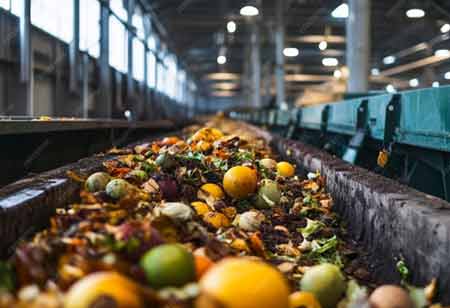THANK YOU FOR SUBSCRIBING
Be first to read the latest tech news, Industry Leader's Insights, and CIO interviews of medium and large enterprises exclusively from Food and Beverage Tech Review
Charged Sprayers Revolutionize Agriculture & Sanitation
In agriculture and public health industries, efficiently spraying protective chemicals is crucial for protecting crops from diseases, combating pests, and sanitizing surfaces.
 (2)-450x308_Ham9.jpg)
By
Food and Beverages Tech Review | Wednesday, January 29, 2025
Stay ahead of the industry with exclusive feature stories on the top companies, expert insights and the latest news delivered straight to your inbox. Subscribe today.
Electrostatic spraying technology is now revolutionizing crop protection, pest control, and surface sanitation on Earth. Electrostatic Spraying Systems Inc. (ESS) has adapted NASA's innovations to enhance agricultural practices and promote environmental sustainability by utilizing electrically charged droplets.
Fremont, CA: In agriculture and public health industries, efficiently spraying protective chemicals is crucial for protecting crops from diseases, combating pests, and sanitizing surfaces. Electrostatic Spraying Systems Inc. (ESS), based in Watkinsville, Georgia, has developed cutting-edge electrostatic sprayers that offer superior coverage thanks to technology originally designed by NASA to water plants in space.
The origins of ESS’s innovative approach can be traced back to research conducted at the University of Georgia in the 1970s and ’80s. The key to their electrostatic sprayer lies in inducing an electric charge onto atomized liquid droplets. Like a static-charged balloon clinging to a wall, the electrically charged droplets adhere to targeted surfaces, ensuring complete and uniform coverage.
NASA’s initial interest in this technology stemmed from a distinct challenge faced by astronauts—growing plants aboard the International Space Station. Without the assistance of gravity, traditional watering methods are ineffective. Electrostatic sprayers offered a solution, enabling water droplets to stick to plants evenly and effectively in microgravity environments. However, these systems needed to be redesigned for space, as most sprayers on Earth require significant amounts of water and air to function—both of which are limited resources in orbit.
At NASA’s Kennedy Space Center in Florida, researchers Charles Buhler and Jerry Wang, working alongside University of Georgia consultant Edward Law, developed a novel mister nozzle to address these challenges. The design minimizes the internal volume of the nozzle to conserve resources while preventing pressure buildup, making it ideal for enclosed environments like the space station. This breakthrough ensured that small, precisely controlled droplets could be produced without excessive resource demands.
Recognizing the potential for this technology to benefit Earth-based industries, NASA’s technology transfer team contacted companies that could use the design in their products. Electrostatic Spraying Systems saw the value of the sprayer technology and licensed it from NASA, incorporating it into their MaxCharge product lines. Today, ESS’s enhanced sprayers are helping industries achieve greater efficiency in crop protection, pest control and sanitation while reducing waste. By leveraging NASA’s advancements, ESS has improved agricultural practices and contributed to public health and environmental sustainability.
From watering plants in orbit to protecting vital resources on Earth, this partnership underscores the broad-reaching impact of space technology on everyday life.
I agree We use cookies on this website to enhance your user experience. By clicking any link on this page you are giving your consent for us to set cookies. More info







